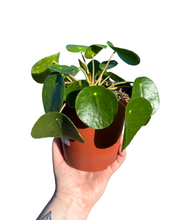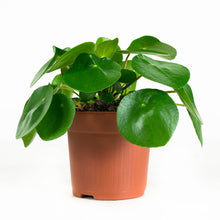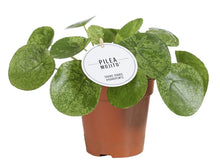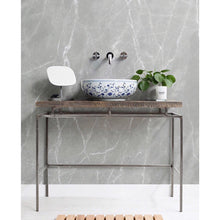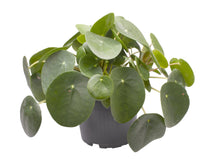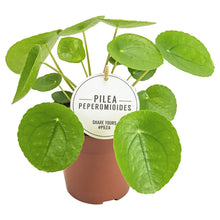
Pilea peperomioides is part of the Urticaceae family and its native range is China, specifically SW. Sichuan and W. Yunnan. It’s documented in The Kew Magazine (Vol. 1, No. 1, April 1984) that a specimen was received at Kew in 1978 that caused great confusion, it’s flowers looked like those from the Urticaceae family but the leaves looked like Peperomia.
Pilea peperomioides produce ‘pups’ which you can separate from the mother plant or keep in the same pot. As Pilea mature, it is common for them to shed their lower leaves, especially after they’ve produced a lot of pups.
Genus name comes from the Latin ‘Pileus’ meaning cap. The specific epithet means ‘Peperomia-like’.
Light: Bright indirect light, meaning the plant sees the sun for 0-4 hours per day - this could be through trees or a translucent curtain, it’s important for the plant to see the sky in order to thrive.
Water: Allow the first 2-3 inches of mix to dry out, pour water slowly over the top and allow the water to pass through the drainage holes.
Potting mix: A well draining mix composed of coco coir, perlite or vermiculite, orchid bark and worm castings.
Fertilising: Feed your plant every other watering during the growing season or when you observe active growth. You can dilute fertiliser to half the recommended amount but never add more.
Temperature: 15-30°C.
Humidity: This plant would prefer higher humidity but do well to adapt to average home humidity. You can increase humidity by placing the plant on a watered pebble tray or using a humidifier.
Pilea peperomioides is non-toxic.







